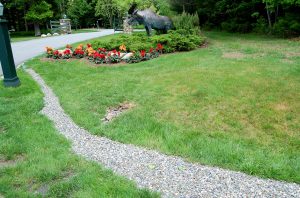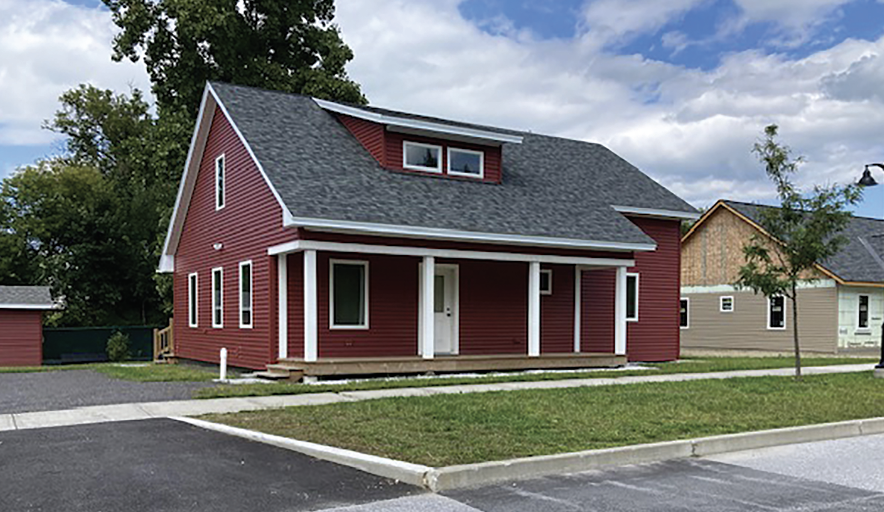VHFA announces homeownership funding
The Vermont Housing Finance Agency (VHFA) Board of Commissioners recently awarded Vermont State Affordable Housing Tax Credits for homeownership development projects across the state. Once sold to investors, the credits will yield nearly $3 million in equity for downpayment assistance for newly constructed or substantially rehabilitated single-family homes as well as energy-efficient manufactured homes.
Additionally, commissioners awarded more than $8.5 million as part of the Missing Middle-Income Homeownership Development Program, which will create 180 homes across the state. Combined, these investments will support the construction or substantial rehabilitation of at least 254 homes.
“VHFA is committed to seeking innovative and sustained solutions that provide affordable, homeownership opportunities for all Vermonters,” remarked VHFA Executive Director Maura Collins. “With this summer’s devastating floods, increasing housing development costs and the continuation of soaring home prices, we need all the tools possible that provide a variety of housing options. Vermont’s long-standing state housing tax credit program and the newly created Missing Middle-Income Homeownership Development Program are two effective ways to meet our state’s housing needs.”
Created in 2000 and expanded several times since, the Vermont State Affordable Housing Tax Credit was created by the Vermont Legislature to support the development of affordable rental and for-sale homes, including energy-efficient manufactured homes. Additionally, the state credits are used to support down payment assistance for low- and moderate-income households when purchasing a home. Special consideration was given to flood resiliency when awarding this year’s state tax credits, especially as it relates to Vermont’s manufactured home communities, often times the hardest hit and most impacted by climate change, the state reported.
The Missing Middle-Income Homeownership Development Program was established in 2022 to create new, modest homes throughout the state and help meet the needs of low and moderate-income households due to decades of underinvestment in homeownership and increasing median home prices. The program provides subsidies and incentives for home builders to construct or rehabilitate modest homes affordable to Vermont homebuyers at or below 120% of the area median income. Subsidies from the program will remain in the homes in perpetuity. Additionally, of the Missing Middle-Income Homeownership awards announced Sept. 25, 42% or $3.6 million, went to the development of Shared Equity homes. The program prioritizes factors including geographic disbursement across the state; locations with a history of underinvestment in affordable homeownership; home energy efficiency; proximity to services, public transportation, employment and historic settlement patterns; community revitalization including rehabilitation of historic buildings; new construction in areas targeted for growth; and restoration of natural landscapes.
These 15 homeownership projects received September awards from VHFA:
Salisbury Square Phase 2 in Randolph developed by Randolph Area Community Development Corporation was awarded both state tax credits (generating an estimated $449,909 in equity) and $1,671,742 in Missing Middle-Income Homeownership subsidies to build nine single-family, zero-energy modular homes.
Central Street in Randolph developed by Central Vermont Habitat for Humanity was awarded both state tax credits (generating an estimated $102,996 in equity) and $234,496 in Missing Middle-Income Homeownership subsidies to construct a duplex with two homes.
Bay Ridge Condominiums in Shelburne developed by Champlain Housing Trust was awarded both state tax credits (generating an estimated $281,446 in equity) and $576,148 in Missing Middle-Income Homeownership subsidies for the construction of 26 homes as part of the Harbor Place redevelopment.
Archibald & Volz in Burlington developed by Champlain Housing Trust was awarded state tax credits (generating an estimated $150,000 in equity) for the redevelopment of two existing homes in the old north end of Burlington.
The Manufactured Housing Downpayment Loan Program, a statewide program of Champlain Housing Trust, was awarded state tax credits (generating an estimated $1,540,000 in equity) to be used to purchase or replace at least 35 manufactured homes. The statewide program provides 0% interest second mortgages to help new borrowers purchase a new Energy Star manufactured home or Zero Energy Modular home as well as to replace old manufactured homes with highly efficient modular homes.
Tri-Park Cooperative in Brattleboro in collaboration with Windham & Windsor Housing Trust were awarded state tax credits (generating an estimated $350,000 in equity) to establish 26 new home sites outside of the floodplain and aid in the purchase of “Zero Energy Ready” manufactured homes. This collaboration is modeled after the Manufactured Housing Downpayment Loan Program operated by Champlain Housing Trust.
Main St in Greensboro developed by Central Vermont Habitat for Humanity was awarded $218,391 in Missing Middle-Income Homeownership subsidies for the construction of two new homes as part of a two-story duplex.
Lofts at Sacred Heart in Newport developed by Rural Edge was awarded nearly $2,297,284 in Missing Middle-Income Homeownership subsidies to support the historic rehabilitation and construction of 24 homes at the former site of the Sacred Heart Convent and High School.
Booth Woods in Vergennes developed by Habitat for Humanity of Addison County was awarded $85,000 in Missing Middle-Income Homeownership subsidies to build one new home.
South Street in Springfield developed by Windham & Windsor Housing Trust was awarded $146,140 in Missing Middle-Income Homeownership subsidies and will work with Efficiency Vermont to build a new Zero Energy Modular home.
Hickory Street in Rutland developed by Habitat for Humanity of Rutland County was awarded $90,923 in Missing Middle-Income Homeownership subsidies to build a new home.
Accelerated Manufactured Housing Infill (AMHI) developed by Housing Foundation, Inc. was awarded $419,458 in Missing Middle-Income Homeownership subsidies to purchase 14 new manufactured homes on existing sites in communities located in Bennington, North Clarendon and Braintree.
Affordable Agrihood Housing located in South Burlington developed by Longhouse Builders was awarded $929,947 in Missing Middle-Income Homeownership subsidies to build three single-family homes for farmworkers.
Bob Perry Lane House in Londonderry developed by Mountain Towns Housing Project and Windham & Windsor Housing Trust were awarded $140,534 in Missing Middle-Income Homeownership subsidies to build a single-family home.
Stonecrop Meadows in Middlebury developed by Summit Properties was awarded $1,771,038 in Missing Middle-Income Homeownership subsidies to 37 homes in a mix of duplexes, row townhouses, and townhome flats in 10 buildings.
Commissioners also awarded Addison Housing Works (formally Addison County Community Trust) a $500,000 construction loan for their Lindale manufactured housing community as part of the Lindale Community Wastewater project.
In addition to the housing credits and loans awarded by VHFA, a variety of other funding sources will help complete these homes including: Vermont Housing & Conservation Board, Vermont Energy Investment Corporation, Efficiency Vermont, Congressionally Directed Spending, Flood Resilient Communities Fund, Community Recovery and Revitalization Program, Vermont Manufactured Home Improvement and Repair Program, Rural Development grant, Agency of Natural Resources, local grants, and private funding.
Vermont Housing Finance Agency (VHFA) was established in 1974 to finance and promote affordable, safe and decent housing opportunities for low- and moderate-income Vermonters.
Since its inception, VHFA has helped 30,000 primarily first-time home buyers and their families purchase homes. It also provides financing, development and management support, subsidy administration and tax credits for approximately 8,800 affordable apartments statewide. Each U.S. state has a housing finance agency.

Read the full article here














